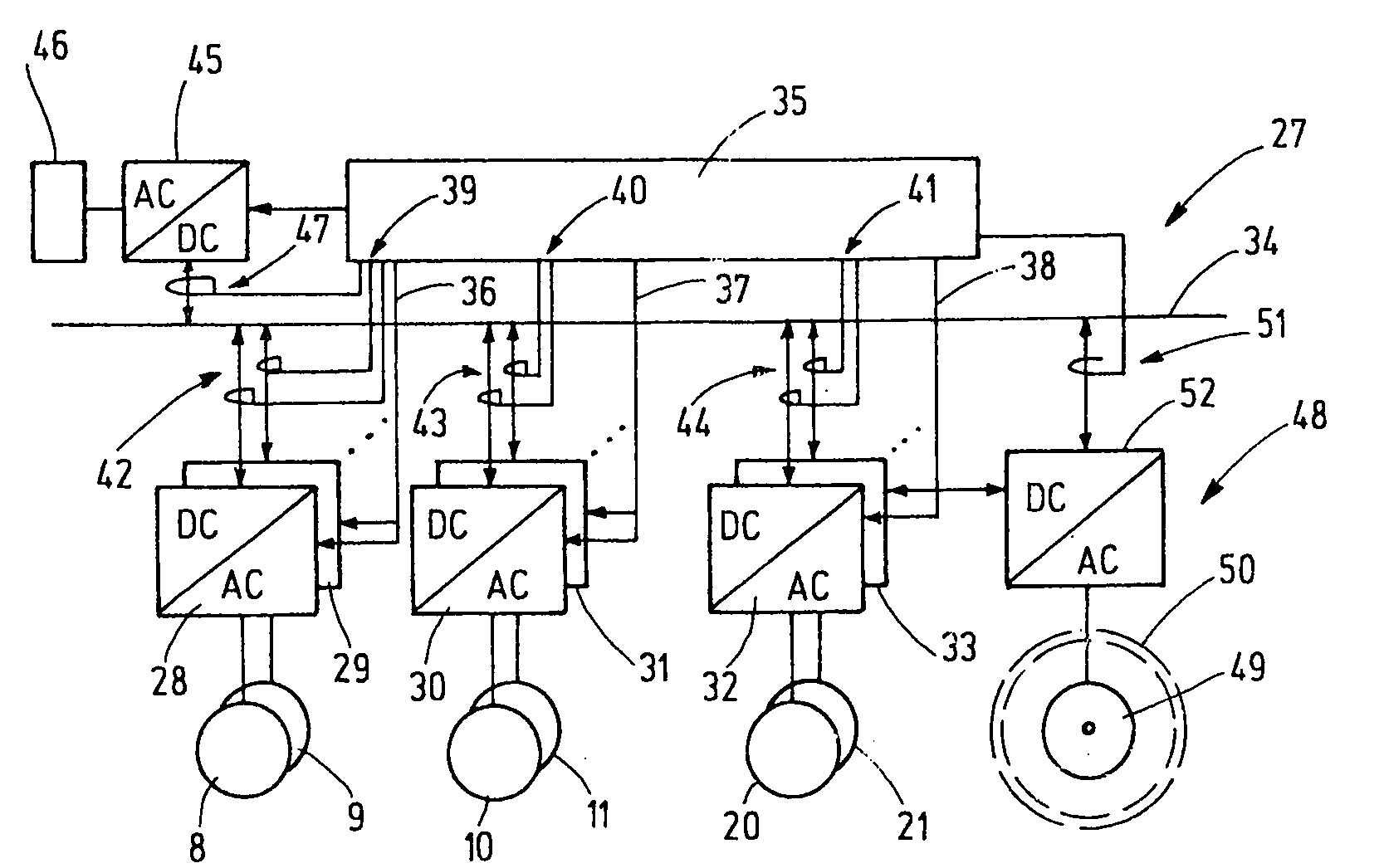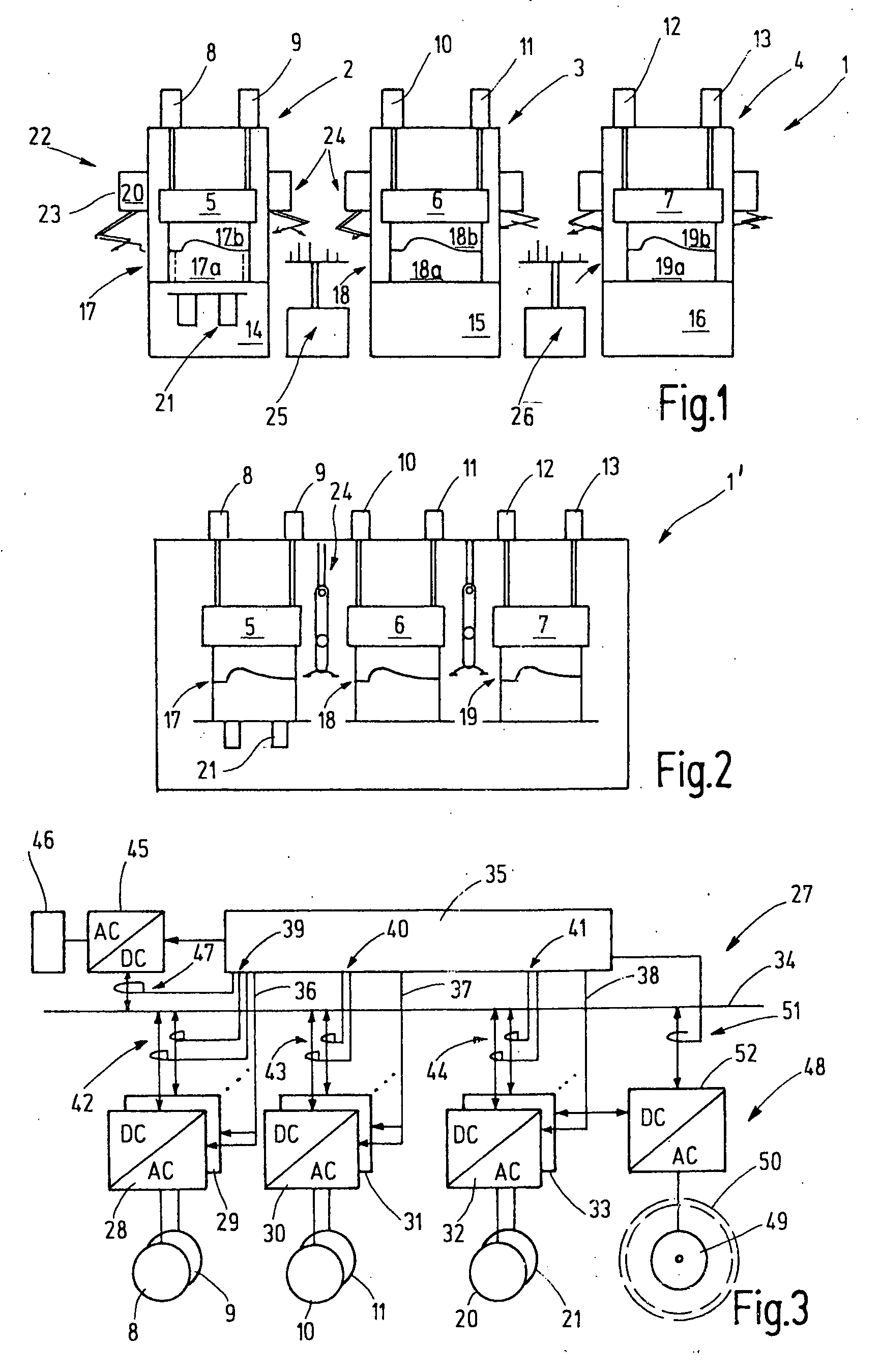Servo-press with energy management
a technology of energy management and servo presses, applied in the field of large partpress installations, can solve the problems of large energy storage, large energy needs to be destroyed, and high cost of connection between main drives and auxiliary drives and drawing dies by way of guide shafts and energy exchange modules, so as to reduce costs and reduce the effect of the conversion arrangemen
- Summary
- Abstract
- Description
- Claims
- Application Information
AI Technical Summary
Benefits of technology
Problems solved by technology
Method used
Image
Examples
Embodiment Construction
[0044]FIG. 1 shows a press installation 1 including at least one, but in the shown example several, individual presses 2, 3, 4. The presses are provided for a stepwise deforming of a workpiece, for example, a metal sheet such as a vehicle body part, or similar, which is treated in one press after another. The press 2 is a drawing press, whereas, the presses 3 and 4 are follow-up presses. Each press 2, 3, 4 has a plunger 5, 6, 7. For driving the plunger 5 at least one, but preferably several servo-motors 8, 9 are provided. Likewise, the plungers 6, 7 are driven by servo-motors 10, 11, 12, 13. The servo-motors 8 to 13 drive the plunger 5, 6, 7 by means of a suitable drive such as a spindle drive. Also other drives may be used such as linear motors or similar drives. Below the plunger 5 to 7 there is in each case a press table 14, 15, 16. For deforming the workpiece, tools 17, 18, 19 are used, each including a ball arm part 17a, 18a, 19a disposed on a press table 14, 15, 16. The respec...
PUM
| Property | Measurement | Unit |
|---|---|---|
| press angle | aaaaa | aaaaa |
| DC voltage | aaaaa | aaaaa |
| energy | aaaaa | aaaaa |
Abstract
Description
Claims
Application Information
 Login to View More
Login to View More - R&D
- Intellectual Property
- Life Sciences
- Materials
- Tech Scout
- Unparalleled Data Quality
- Higher Quality Content
- 60% Fewer Hallucinations
Browse by: Latest US Patents, China's latest patents, Technical Efficacy Thesaurus, Application Domain, Technology Topic, Popular Technical Reports.
© 2025 PatSnap. All rights reserved.Legal|Privacy policy|Modern Slavery Act Transparency Statement|Sitemap|About US| Contact US: help@patsnap.com



